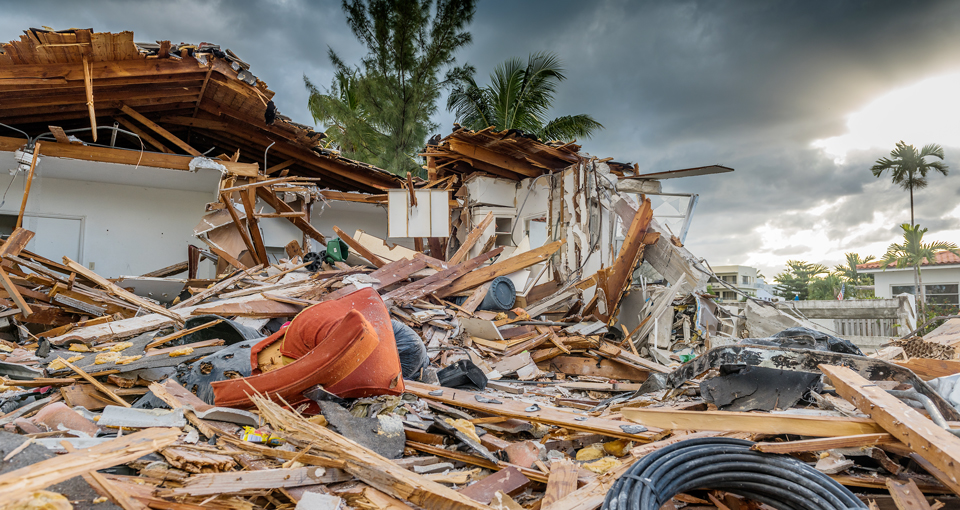
Post-Storm Triage :: Proactive Tips for Managing the Insurance Issues
With catastrophic weather events on the rise, we field a lot of calls in the aftermath of a storm. For smaller businesses and individuals, it can be challenging to manage the cost of engaging coverage counsel to assist with the insurance claim when limited resources may already be stretched thin due to storm-related damages that are not insured. Other times, the claim amount may be too small to warrant engaging counsel. Recently, Hurricane Ian spawned another round of inquiries, prompting us to compile this list of tips for navigating the post-storm chaos without counsel—
- Notify your insurer(s) early. Make sure you give the notice; don’t rely on your agent or broker. If the agent / broker insists on giving notice, make sure you are copied so you can ensure that the policy requirements are met. This is important.
- Take reasonable steps to protect and secure your property and mitigate your losses. Ask your insurance adjuster for help if you aren’t sure what actions you could take.
- Establish an open line of communication with your adjuster or the claim team. Provide information, be responsive, and ask lots of questions. “Have I given you everything you need?” “Does this answer your question?” “Is there anything else?” “Are you waiting on anything from me?” “Can you help me understand _____?” Stay engaged and ask questions to ensure you understand each step in the process.
- Diligently document in writing your communications with the insurance adjuster and other insurance representatives, including telephone conversations, telephone messages, and in-person meetings. The written record should identify all participants to each communication, the substance of the communication, and the date. If it later becomes necessary to establish that the insurer failed to comply with pertinent deadlines, the timeline you’ve created will be invaluable.
- If the adjuster is not responsive to your calls or e-mails, follow up—be pleasant, but persistent. Weather catastrophes typically affect many people and businesses at once; this means insurance adjusters are busier than usual. That’s fine; you can be understanding while following up regularly and expecting responsive communication. Be the squeaky wheel you need to be and don’t let up.
- Try to get direction from the adjuster in writing. If the adjuster will not confirm directives, approvals, or other responses in writing, send an e-mail to confirm the call and be detailed. Ask the adjuster to let you know if you misunderstood anything. That’s more effective than asking them to confirm that you got the details right, especially if the adjuster is not being responsive.
- If you must source and select your own vendors (water remediation, mold remediation, property storage, movers, contractors, etc.), focus on this early but proceed with great caution. In the chaos that ensues following a storm, be careful to avoid engaging disreputable, unqualified contractors and vendors. Obtain complete contact information, verify the contact information, and ask questions to confirm qualifications. Be wary of folks that come knocking on your door offering to help—if possible, opt for trusted local providers. Ask friends and family for recommendations, get references from contractors and vendors, and take the time to check them. Seek input from the insurance adjuster and ask the adjuster to approve your selections or let you know if s/he has any objections.
- Take photos of everything. Download and label/caption them while your memory is fresh. Inventory and document damaged personal property. A list of damaged items with values and photographs would be ideal. If you can ascribe property values and date of purchase, that can be very helpful. Include as much detail as possible; receipts are also helpful, if you have them.
- Don’t throw things away without offering the insurer an opportunity to inspect them. If possible, obtain permission to dispose of damaged items. Category 3 water-damaged items are already disgusting and will deteriorate rapidly. (NOTE: Category 3 water or “black water” is grossly contaminated and can contain pathogenic, toxigenic, or otherwise harmful agents. Flooding from seawater, ground surface water, rising water from streams and rivers, and sewage are all considered Category 3 water.) Insurance adjusters know this, but some insurers love to blame homeowners for not “preserving” things. As if. If the adjuster doesn’t take you up on your invitation to inspect, let them know that you must dispose of the contaminated, hazardous items—and let them know how long they have to either take possession or inspect.
- Follow up on everything early and often. “We have a lot of Category 3 water- damaged items. It’s 95 degrees during the day. Mold is growing. When will you be out to inspect? May we discard these items? Please provide your response in writing.” If possible, get photos of everything before you discard.
If you are reading this before you experience a storm or fire loss, touch base with your insurance agent—make sure your insurance policy limits are sufficient for both the structure and personal property/contents. Consider whether it makes sense to inventory valuable items that might be damaged in a storm so you have some of this work already complete in the event of a natural disaster. And check out our blog post on storm claims.
